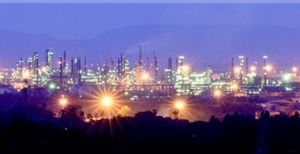India's refiners bet big on petrochemicals as industry reshapes
NEW DELHI (Reuters) — India's state oil refiners—long focused on churning out transport and cooking fuels—are planning a $35 B push into petrochemicals to meet an expected surge in demand for goods ranging from plastics to paints and adhesives.
The drive comes as the government seeks to promote durable, cheaper materials in industries such as farming and food packaging, while refiners eye long-term threats to their business from renewable energy and a shift to electric vehicles.
India's per capita consumption of synthetic polymers, for instance, used to make various grades of plastics, is just 22 lbs a year, compared with a global average of about 32 kg.
"India is one of the fastest growing economies globally, but our petrochemical use is one-fourth the world average. We import half of our petchem consumption," said S. Mitra, executive member at trade body, the Chemical and Petrochemical Manufacturing Association.
He estimated demand would jump from 30 MMt to 40 MMt in the 3 yr to 2019–2020, growing the country's petrochemicals market to around $65 B–$70 B.
India's Petroleum minister Dharmendra Pradhan said in July the government wants to set up petrochemical clusters in the eastern, western and southern regions around refineries.
The government is still formulating a national policy for petrochemicals after a white paper that proposed a fund to boost investment and encouraging the use of plastics in areas like packaging and farming wasn't taken forward.
However, India's big three state refiners, Indian Oil Corp (IOCL), Bharat Petroleum Corp Ltd (BPCL) and Hindustan Petroleum Corp Ltd (HPCL), already plan to spend about $35 billion to boost their petrochemicals business, according to interviews with senior company executives.
As part of efforts to cut greenhouse gas emissions, India's government has proposed a 15-yr roadmap for rolling out electric vehicles, and has been aggressively auctioning solar power generation as part of a push to triple renewable power generation capacity by 2022.
"Large portions of the future refineries should be in petrochemicals to spread the risk of a reduction in diesel consumption," said R Ramachandran, head of refineries at Bharat Petroleum Corp.
INVESTMENT PUSH
BPCL and HPCL will each spend about $15 B over 5 yr to raise the industry's share of their total revenue to 10 percent, executives from both the companies said.
Top refiner IOCL will invest $4.7 B over the next 5 yr–7 yr, top executives said, boosting revenue from petrochemicals from a quarter to a third of total revenue.
Together, the three firms plan to invest $42.3 B to build the world's biggest crude refinery with capacity of 1.2 MMbpd on the country's west coast, which will be linked to a petrochemical plant.
Indian Oil also plans to expand its Panipat and Paradip petrochemical plants and build a new complex at it Koyali refiner.
"Cracks and margins are also good for petrochemicals. Earlier they used to be cyclical but now they are steady for last few years," said A K Sharma, Indian Oil's head of finance.
HPCL, along with smaller refiner GAIL (India) Ltd, is building a 1.1 MMtpy petchem project in southern India, while BPCL plans a petrochemical complex at its Bina facility in central Madhya Pradesh state and is commissioning another at its Kochi facility in southern Kerala.
HPCL also plans to link a 2 MMtpy petchem complex to a planned refinery in the desert state of Rajasthan, while HPCL-Mittal Energy Ltd (HMEL) is building a 1.3 MMtpy petrochemical plant at its Bhatinda refinery in northern Punjab.
"If transport fuel demand is impacted due to technical disruption then we can divert molecules of hydrocarbon to the next best opportunity like petchem," said HPCL chairman M.K. Surana.
"Petchem plants provide us with an alternative line of revenue and add to our gross refining margins," he said. "It is a good de-risking model."
Reporting by Nidhi Verma in NEW DELHI and Promit Mukherjee in MUMBAI; Editing by Henning Gloystein and Richard Pullin







Comments